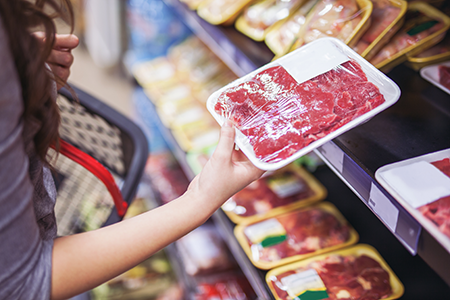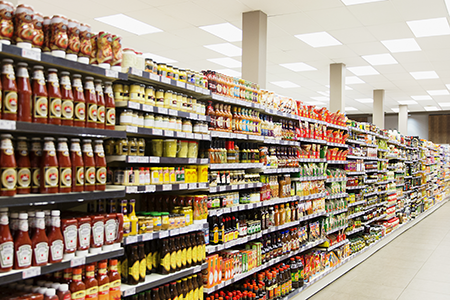Navigating the Grocery Store

The grocery store can be an overwhelming place, especially when you’re trying to make healthy choices. With such a wide variety of options available, it can be challenging to decide what’s best for you and your health goals. Use the information below to help better understand what to look for in each area of your supermarket.

Fresh Produce
Make sure to choose a variety of fruits and vegetables to ensure a good balance of vitamins and minerals. Pick produce that is “in season,” as it will be in abundance and will be the best price. If meal prepping is a challenge for you, pick up some pre-chopped vegetables to make meal preparation simple!

Deli
When at the deli counter, look for low sodium options. Healthier options would include turkey breast, chicken breast, roast beef, and lean ham. Try to avoid formed meats with visual fat throughout, like, salami, bologna, and pepperoni. They are higher in saturated fat and calories and should be consumed in moderation.

Meat & Seafood
Look for meat that is labeled 90% lean and 10% fat when possible. Lean cuts of meat may be more expensive, but they contain less unhealthy fats.
Other lean protein choices include skinless chicken, turkey, and fish. The Dietary Guidelines for Americans recommends an intake of at least 8oz of fish per week.

Eggs & Dairy
Eggs are a great source of protein that are also budget-friendly! Brown and white eggs have the same nutritional value, so choose whatever you prefer.
When choosing your dairy products, like milk and cheeses, look for low and reduced-fat products (skim, 1%, 2%). These products contain less saturated (unhealthy) fat than their whole milk alternatives. Yogurt is commonly high in added sugar. To limit added sugar intake, try choosing plain yogurt and adding fresh fruit.

Frozen Foods
Frozen fruits and vegetables are budget-friendly, convenient, and last longer than their fresh counterparts. For the best options, choose frozen produce that does not have added sauces or seasonings. Your ingredient list should include only the fruit or vegetable that is in the package.

Packaged & Canned Foods
Don’t fear the center aisles of the grocery store. Some of our kitchen staples are packaged foods, and that’s okay! Some healthful options include:
- Whole-wheat pasta
- Brown rice
- Quinoa
- Whole-grain crackers
- Unsweetened oatmeal
- Olive oil
- Herbs
- Spices
Canned foods provide great convenience and are typically very affordable but often very high in sodium or added sugar. When able, choose items that are labeled as “reduced sodium,” “no salt added,” or “no added sugar.”

Breads
When getting bread, choose 100% whole wheat or whole grain when possible. Look for options with at least 3 grams of fiber per serving.

Download the Free Resource
Access a printer-friendly version of the resource to reference later.